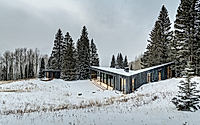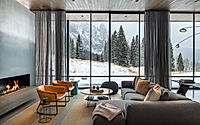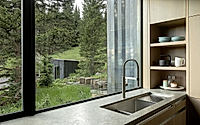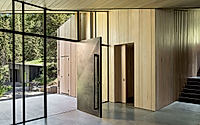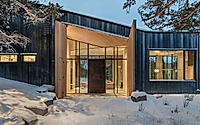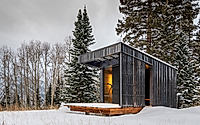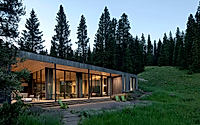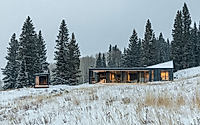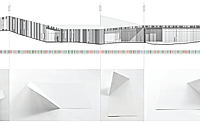DNA Alpine House Shaped by Colorado Mountains Weather
CCY Architects has designed a copper-clad house in San Miguel County, Colorado, nestled among Engelmann Spruce trees. Called DNA Alpine, the property includes a main house, sauna, and garage, with architecture inspired by the surrounding landscape and contemporary artists. The design accommodates extreme weather conditions, featuring a non-repetitive pattern on the façade derived from the DNA of neighbouring trees. This eclectic home combines natural materials with artful elements, offering expansive views of the alpine meadow while maintaining environmental sensitivity.

Site-Sensitive Design at DNA Alpine
With thorough site analysis, the 4,000-square-foot (371-square-metre) property comprises three smaller buildings: a main house, sauna, and garage.

“The architects were challenged to create an artful house that would be deferential to its high alpine mountainous site, amplify its revered beauty, and be tough enough to withstand the extreme climate,” the team said.
“Clad in copper, this 4,000-sf house provides a crafted enclosure designed to meet the needs of the ever-changing weather conditions at 10,000 feet,” they continued.
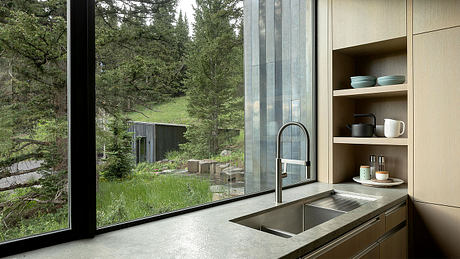
Copper Building Derived From DNA
“Inspired not only by the site’s surrounding landscape, the design team also looked to contemporary visual and land artists for inspiration when ideating the façade,” the team said.
“The copper exterior comprises a series of four metal profiles arranged in a non-repetitive pattern derived from the DNA sequence of the site’s surrounding Engelmann Spruce trees.
Beyond the home, additional buildings with copper cladding were included, making up a comprehensive site-focused layout of buildings.
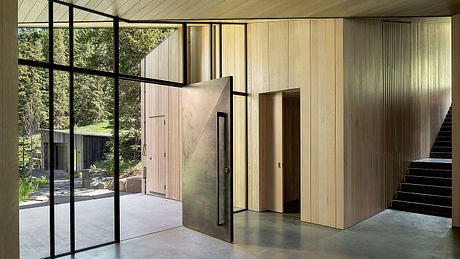
Integrating the Existing Site
“With intimate knowledge of the 70-acre site, the clients desired to live on the north edge of a meadow, beneath towering Engelmann Spruce trees – which all needed to remain undisturbed,” the team added.
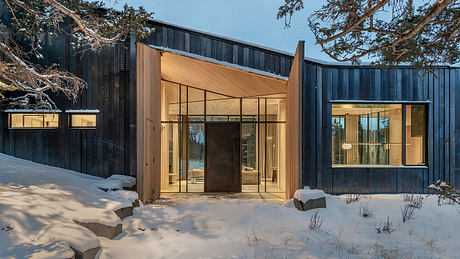
The home incorporates varying roofs designed in order to accommodate the elevated site.
“The building roof forms shift and fold with the sloping landscape, preserving the gently undulating meadow beyond, while also allowing interior spaces to open to views,” the team noted.
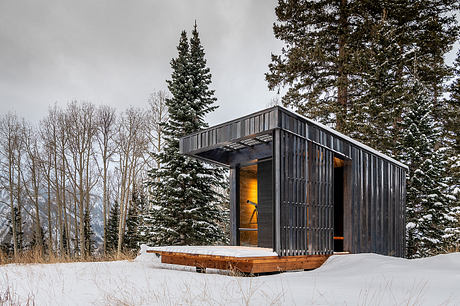
Interior Spaces For Artisan Living
“The design team optimized the program, paring it down without losing any desired functions,” the team noted.
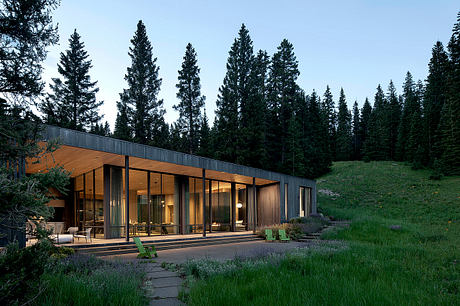
“In addition, behind the fireplace, an intimate reading corner connects to the outside, and a sleeping nook is tucked under the sloping roof on the second level to add functionality throughout the tight floorplan,” they continued.
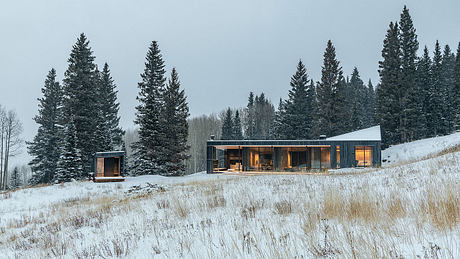
“The house was also designed to be closed off while unoccupied,” the team said.
“A full-height entry door enables the clients to secure the house when not in use, protecting it from heavy snowfall and the elements.”
Natural and warm wood elements can be found throughout the interior, while simple furniture and a stand-alone wood-burning fireplace complete the layout.
Along the entrance, large windows give the home a warmer and spacious feel while opening the home to the surrounding landscape.
Photography by Draper White, Jeremy Bittermann, CCY Architects
Visit CCY Architects
